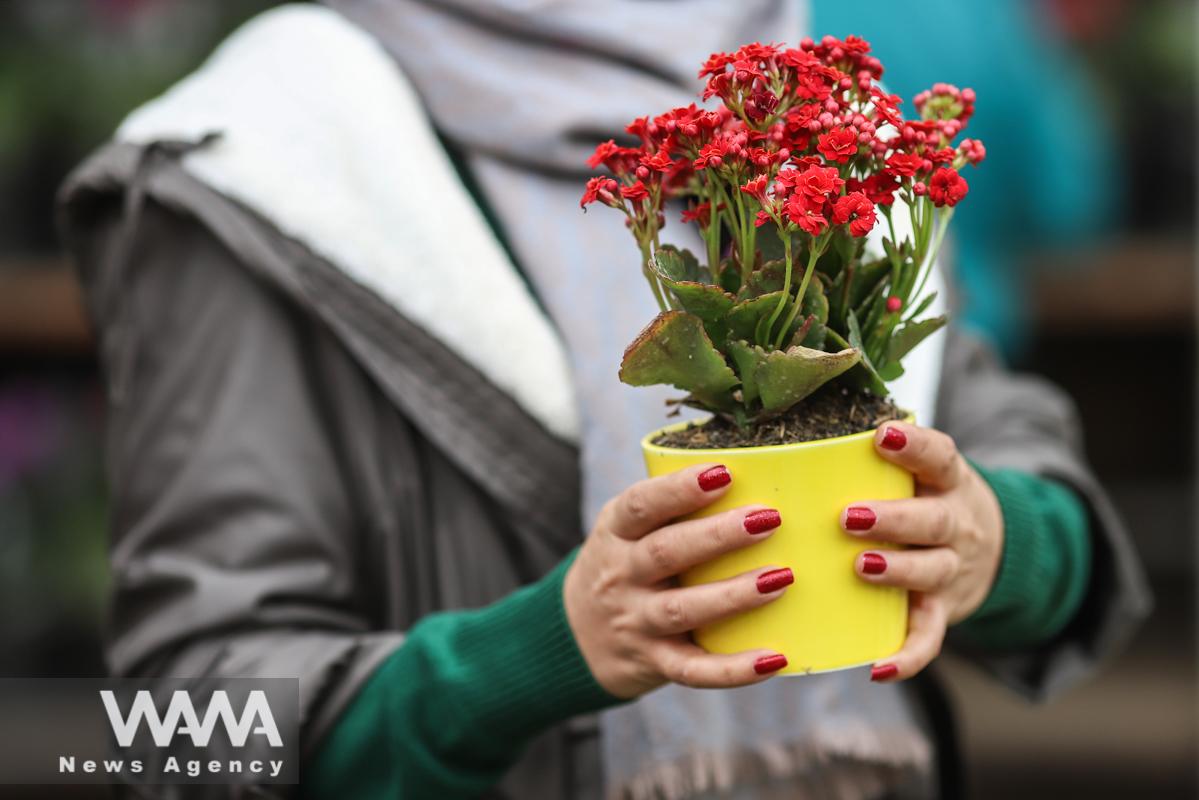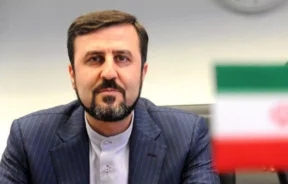Nowruz, Goodbye to Winter, Hello to Spring
WANA (Mar 19) – Nowruz is the Iranian New Year, also known as the Persian New Year, which is celebrated worldwide by various ethno-linguistic groups.
Nowruz is a rite dating back to at least the 6th century BCE, marking the new year and ushering in spring. Variously known as Novruz, Nowruz, Noruz, Navruz, Nauroz or Nevruz, this historic rite is observed on 21 March in many countries along the Silk Roads, including Afghanistan, Azerbaijan, India, Iran, Iraq, Kyrgyzstan, Kazakhstan, Pakistan, Tajikistan, Turkey, Turkmenistan and Uzbekistan.
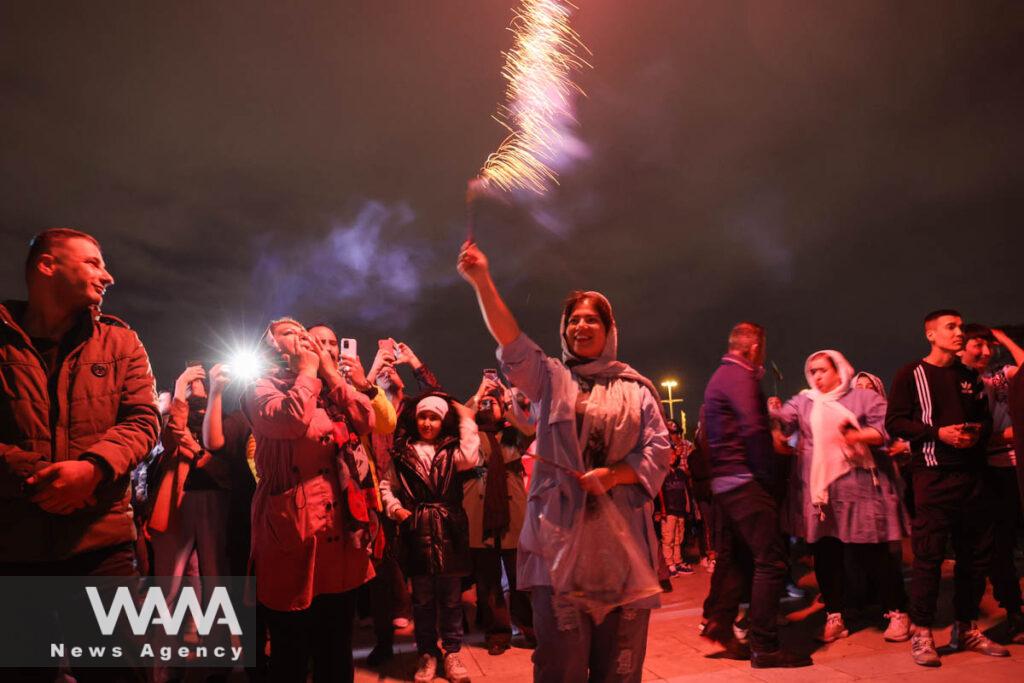
Iranians celebrate the Iranian New Year Nowruz next to the Azadi Tower in Tehran, Iran March 21, 2023. Majid Asgaripour/WANA (West Asia News Agency)
Nowruz is celebrated by peoples of many different religions and cultures across this vast region. Some of the festival’s earliest origins lie in Zoroastrianism, marking one of the holiest days in the ancient Zoroastrian calendar.
The return of the spring was seen to have great spiritual significance, symbolising the triumph of good over evil and joy over sorrow. In particular, the Spirit of Noon, known as Rapithwina, who was considered to be driven underground by the Spirit of Winter during the cold months, was welcomed back with celebrations at noon on the day of Nowruz according to Zoroastrian tradition.
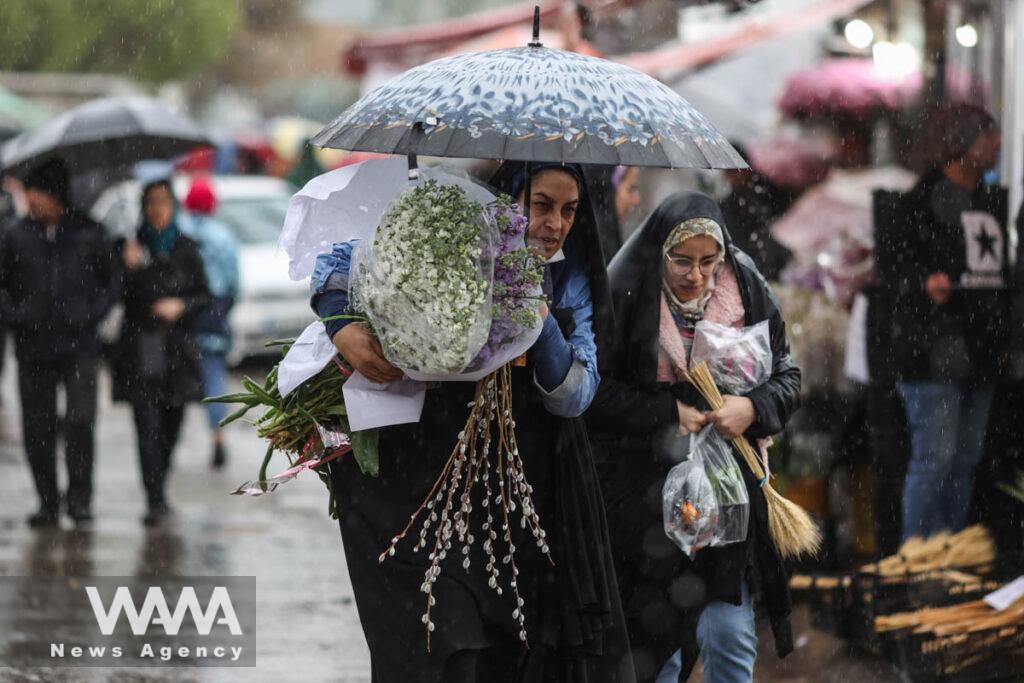
Iranian women walk through rain in a flower market, ahead of Nowruz, the Iranian New Year, in Tehran, Iran March 16, 2023. Majid Asgaripour/WANA (West Asia News Agency)
LOCAL TRADITIONS
Nowruz is also associated with a great variety of local traditions, including the legend of Jamshid, a king in Persian mythology. To this day in Iran, Nowruz celebrations are sometimes known as Nowruze Jamshidi. According to the myth, Jamshid was carried through the air in a chariot, a feat that so amazed his subjects that they established a festival on that day. Similar mythological narratives exist in Indian and Turkish traditions, while the legend of Amoo Nowrouz is popular in the countries of Central Asia.
On the day of Nowruz, there is much feasting, visiting family members and friends, and exchanging gifts. A wide range of cultural performances and traditions also take place. Children are often given small toys, and traditionally play with colourfully painted eggs. Families and within communities share a symbolic meal, often consisting of cooked rice and vegetables combined with many local ingredients. In Kyrgyzstan, this meal is a public ceremony, with designated areas set aside in towns for the preparation of Nooruz Kedje or Chon Kedje , a type of soup made from bull’s meat.

Iranians celebrate the Iranian New Year Nowruz next to the Azadi Tower in Tehran, Iran March 21, 2023. Majid Asgaripour/WANA (West Asia News Agency)
One widespread tradition is the preparation of a Nowruz table, on which a number of symbolic objects are placed. While these tables differ slightly from region to region, the most common features are: water, candles, dishes of green sprouts (or Sabzeh), a traditional dish made out of crushed wheat sprouts, mirrors, eggs, and various fruits. These objects symbolise purity, brightness, abundance, happiness and fertility for the new year. In Iran, the table is referred to as the “Sofreh-ye Haft Sin”, and displays seven objects, each starting with the letter ‘S’. A similar table is set in areas of India.
In recognition of the importance of this ancient rite, Nowruz was inscribed on UNESCO’s Representative List of the Intangible Cultural Heritage of Humanity in 2009. Moreover, in 2010, the United Nations General Assembly proclaimed 21 March International Nowruz Day.
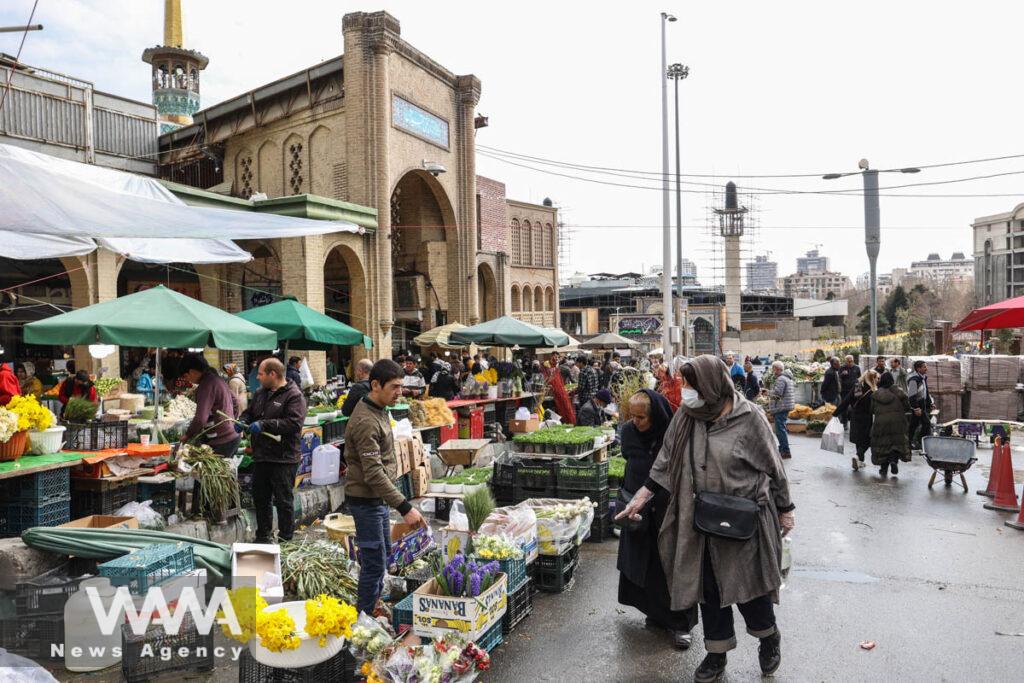
Iranian women shop at the Tajrish Bazaar, ahead of Nowruz, the Iranian New Year, in Tehran, Iran March 15, 2023. Majid Asgaripour/WANA (West Asia News Agency)
NOWRUZ CELEBRATION IN IRAN
Iranian around the world are preparing this to celebrate Nowruz: the Persian new year. Iranian people carry out a thorough cleaning of their houses. The cleaning is called “sweeping the dust”, and represents a wish to put away old things, bid farewell to the old year, and welcome the New Year.
The arrival of spring means that the cold season is over and warmth is on the way. But to many countries in the Middle East and Central Asia, especially Iran, there’s more to it than that. For the Iranian people, the arrival of spring is all about a long lasting tradition, a celebration rooted in history and the glorification of growth and vigor in Mother Nature.
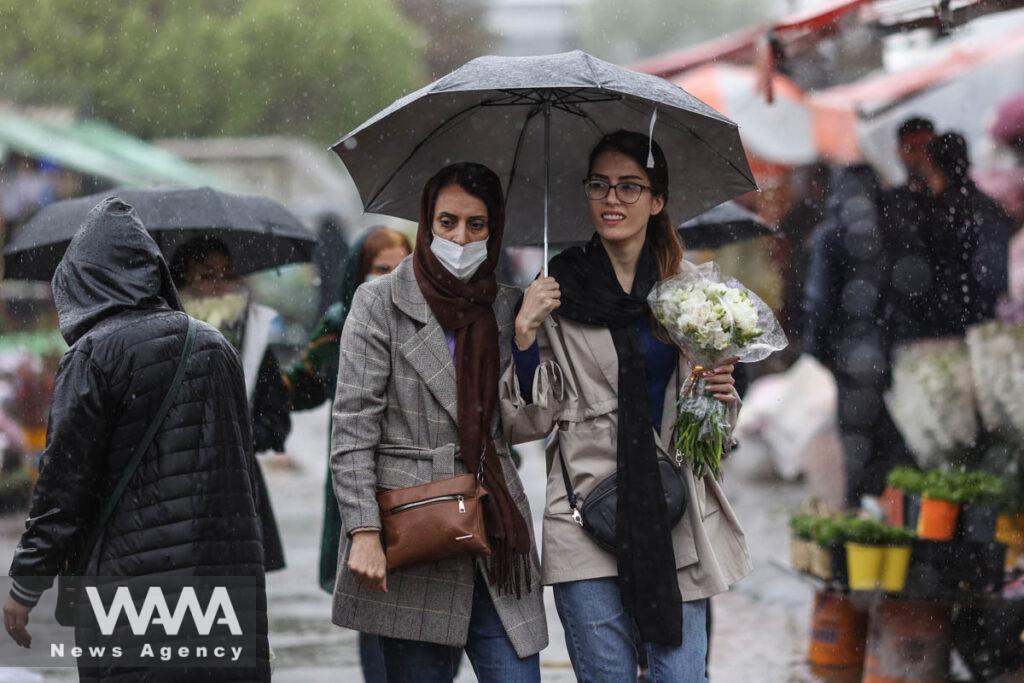
Iranian women walk through rain in a flower market, ahead of Nowruz, the Iranian New Year, in Tehran, Iran March 16, 2023. Majid Asgaripour/WANA (West Asia News Agency)
KHANEH TEKANI!
It all begins in early March with ‘spring cleaning’. This tradition known as ‘Khaneh Tekani,’ literary meaning ‘shaking the house,’ is common in almost every household. Carpets are washed, windows are wiped, silverware is polished, curtains are taken to the dry cleaners and old furniture is repaired or replaced with a new one.
Every nook and cranny is scrubbed and polished until the whole house is sparkling clean. All family members are involved in this ritual, a ritual that signifies a fresh start to the year. It is widely believed that with all the dust and grime, ill fortune is also washed away and the slate is wiped clean again.
And then it’s shopping time. During the weeks left to the New Calendar Year, people head for the markets and shopping centers to buy an assortment of goods. And what’s on the list? New clothes, new shoes, fresh fruits, sweets and confectionaries, nuts, flowers and everything that goes on the Haft Seen Table. This special spread is a ‘must’ on the New Year and local markets are packed with enthusiastic shoppers who are looking for those special offers and last minute bargains.
Local flower markets are the busiest during the final days of the year. They’re filled with fresh cut flowers, beautiful potted plants and vendors beckoning you to buy. As you baby step your way through the crowd, you can’t help but enjoy all that enthusiasm and vigor in the air! The hyacinth is probably the most sought after flower here as it stands for prosperity and happiness in the Persian culture.
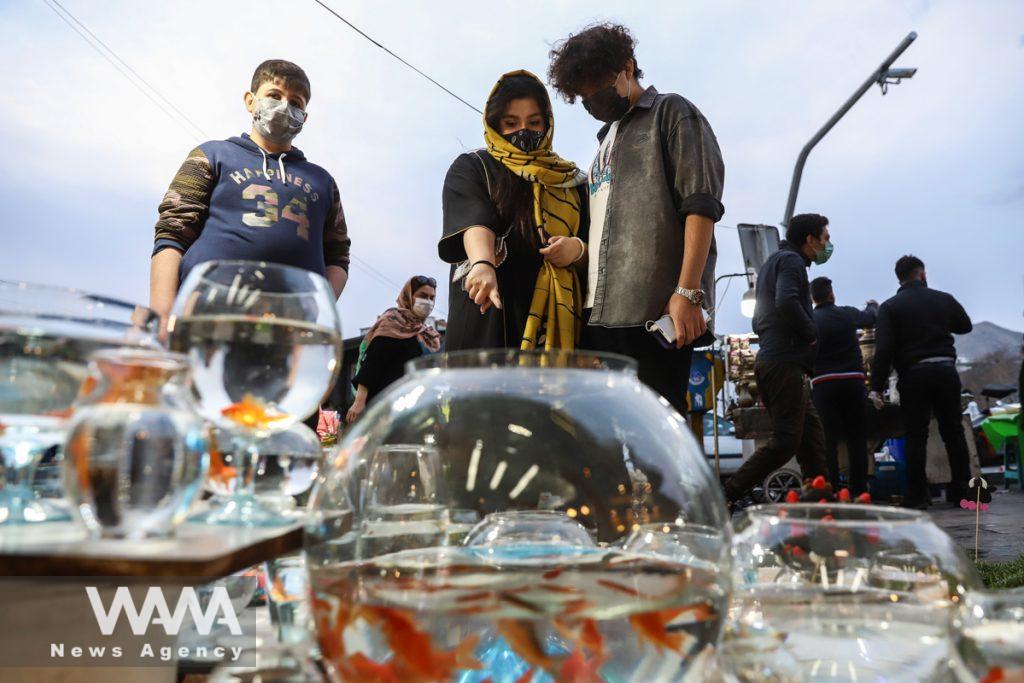
People buy golden fish, ahead of the Iranian New Year Nowruz, March 20, in Tajrish Bazar Tehran, Iran March 10, 2021. Picture taken March 10, 2021. Majid Asgaripour/WANA (West Asia News Agency)
CHAHARSHANBE SOORI OR THE FIRE FESTIVAL
Nevertheless, the most important curtain-raiser to Nowruz is Chaharshanbe Soori which is a fire festival held on the eve of the last Wednesday of the calendar year. This festival is full of special customs and rituals, especially jumping over fire. As the sun sets, people light up fires and gather around to jump over them. As they do this, they sing “zardi-ye man az toh, sorkhi-ye toh az man” meaning my yellow is yours, your red is mine. In this ritual, they ask the fire to take their paleness and problems and in return give them energy and warmth.
As the last day of the year comes to an end, everyone rushes home to be with their families and loved ones. The New Year is all about celebrating those special moments and sharing the joy and gratitude with family members. While the clock is ticking away and the New Year is approaching, the family sits around the specially prepared Haft Seen Table.
Seven items beginning with the sound /s/ are symbolically set on the table. ‘Senjed’ or dried oleaster which symbolizes wisdom, ‘Sabzeh’ or sprouts refer to rebirth, ‘Seeb’ or apple stands for health and beauty, ‘Samanu’ or pudding made from wheat germ is a sign of power, ‘Sir’ or garlic refers to medicine and good health, ‘Serkeh’ or vinegar symbolizes patience and finally Somac which stands for sunrise and Good conquering Evil. Other items such as coins, flowers, mirror and candle sticks and decorated eggs are also put on the table to bring good luck, wealth and happiness for the family.
The Holy Quran also has a special place on the table. And let’s not forget the goldfish which is favorite especially to the children.
Nowruz holiday in Iran is a two-week event. It is mostly about socializing and strengthening family bonds and meeting up with old friends. During this period, people pay visits to each other’s houses and entertain their guests with fresh fruits and nuts. It’s tradition for the elders to give away money called ‘Eidi’ to the children. Nowruz holiday is also a perfect opportunity for the families to go on trips making these two weeks a prime travel season.
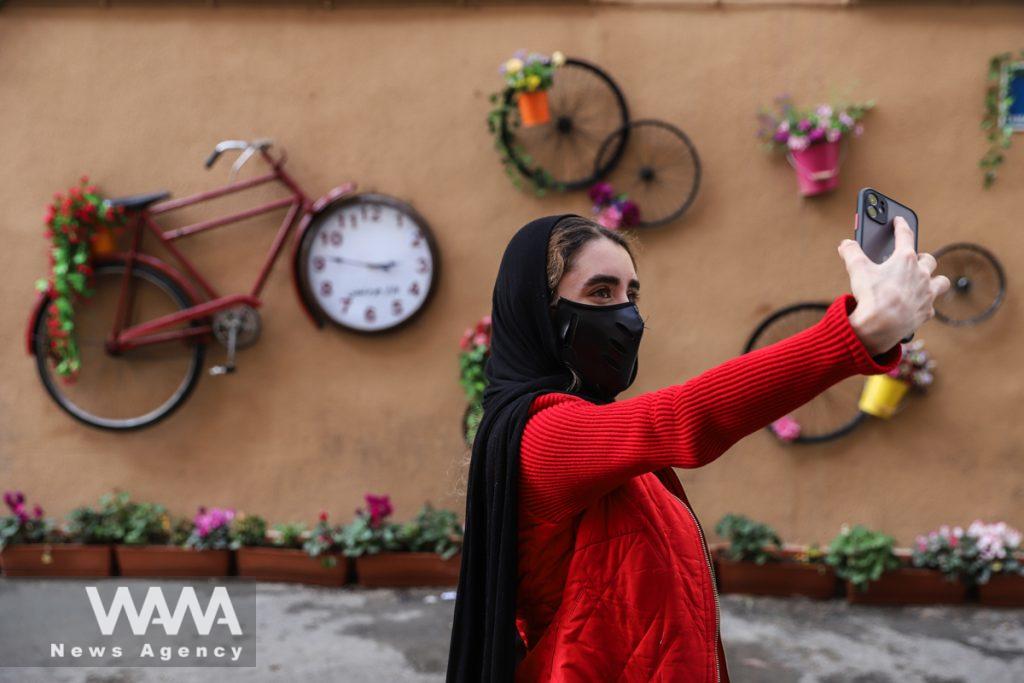
An Iranian girl takes a selfie, ahead of the Iranian New Year Nowruz, March 20, in Tehran, Iran March 10, 2021. Picture taken March 10, 2021. Majid Asgaripour/WANA (West Asia News Agency)
SIZDAH BEDAR: 13TH DAY OF NOWRUZ
The holidays culminate in a special festival called ‘Sizdah Bedar’. This national event falls on the 13th and the last day of the holidays and it is when everyone goes out to spend time in nature. This is all done to get rid of the so-called ‘curse’ of number 13. On this day, people set off for the countryside or the parks to set up tents and have picnics.
Children play football, badminton and Ping-Pong, fly kites and enjoy a game of Frisbee while the elders prepare lunch. Making kebabs is a tradition and men usually take the lead. They start preparing the charcoal grill while the ladies thread the meat onto the skewers.
Source: Social Media

